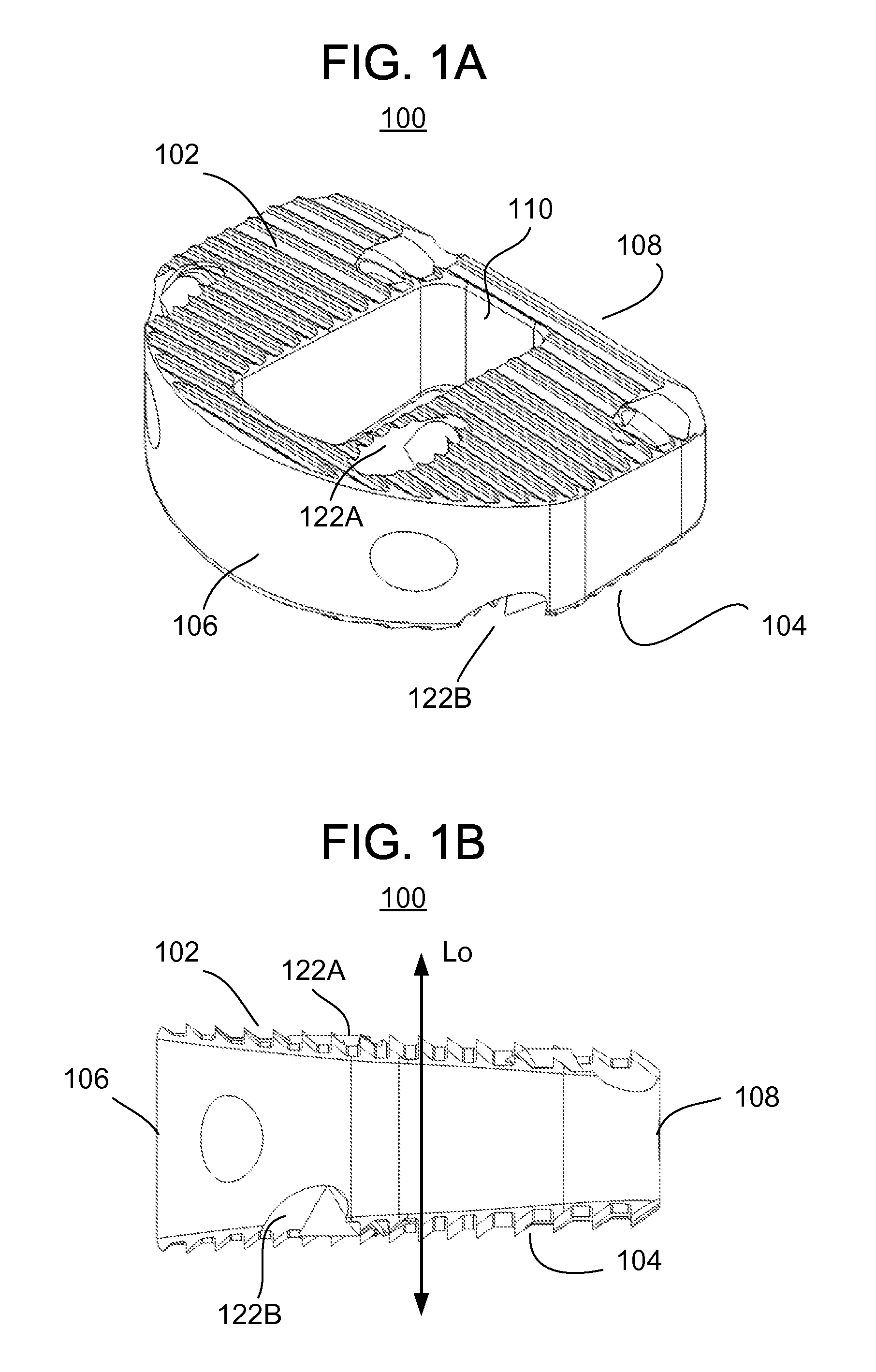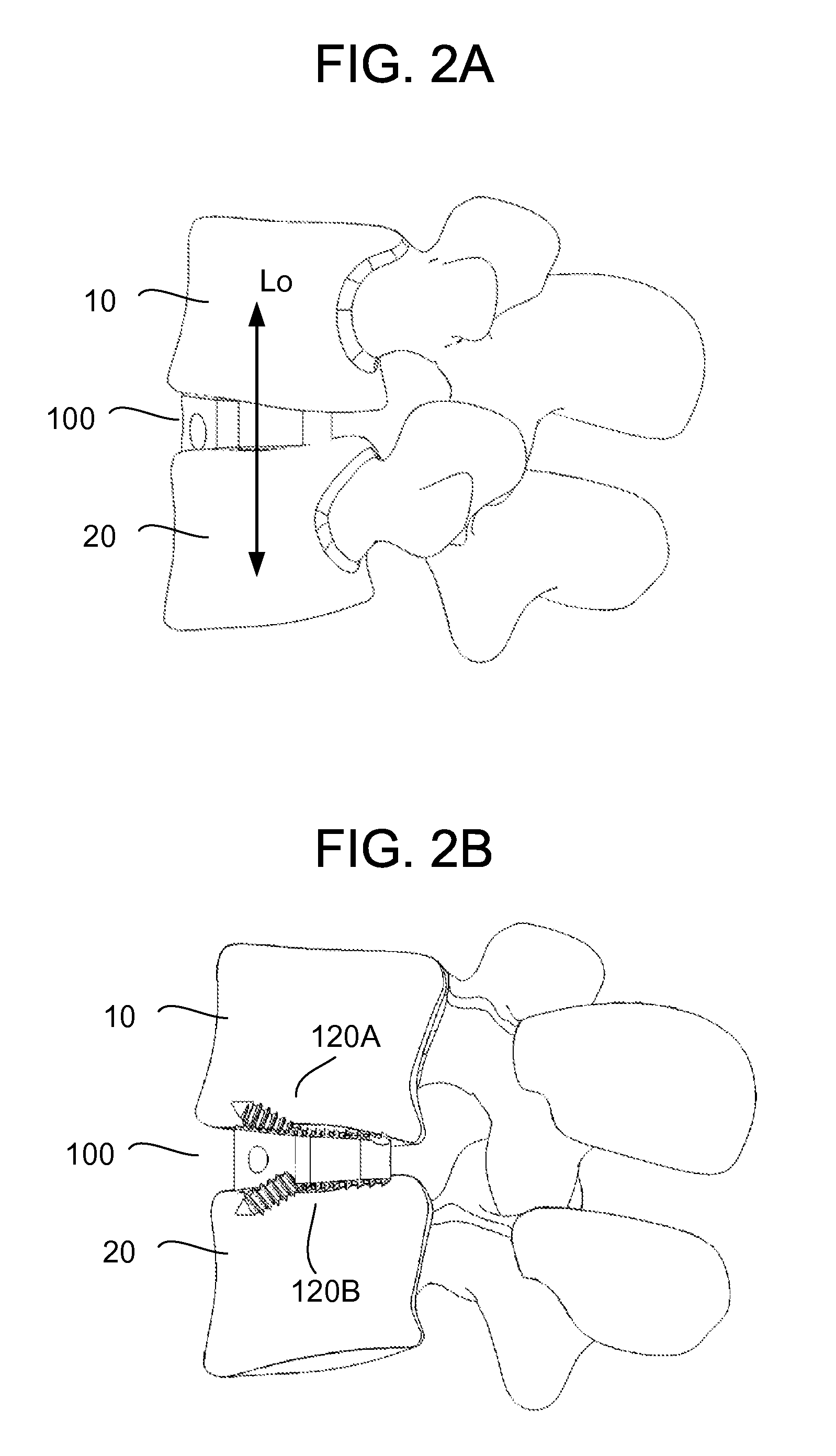Insertion tool for Inter-body Vertebral Prosthetic Device With Self-Deploying Screws
a prosthetic device and self-deploying technology, applied in the field of applicability and methods of spinal disorders using an intervertebral prosthesis, can solve the problems of not always achieving features, co-axial, and unsatisfactory configuration of the opposite deployment of screws/posts, and achieves the effects of convenient use, improved fixation and stabilization, and convenient insertion
- Summary
- Abstract
- Description
- Claims
- Application Information
AI Technical Summary
Benefits of technology
Problems solved by technology
Method used
Image
Examples
Embodiment Construction
[0048]Reference is now made to FIGS. 1A and 1B, which illustrate an intervertebral prosthetic device 100 in accordance with one or more embodiments of the present invention. FIG. 1A illustrates a perspective view of the intervertebral device 100, while FIG. 1B is a lateral (side) view with the left of the drawing being in the front (anterior) direction and the right of the drawing being in the rear (posterior) direction. The body of the device may be made from any bio-compatible material, such as polyetheretherketone (PEEK), titanium, ceramic, etc.
[0049]With further reference to FIG. 2A, which shows the device 100 in use, the device 100 generally includes a body (or housing) that is sized and shaped to fit in the intervertebral space between adjacent vertebral bones 10, 20 of the human spine. It is understood that the size and shape of the device 100 may be adapted to fit in an intervertebral space at any level of the spine, such as the cervical spine, thoracic spine, or lumbar spin...
PUM
 Login to View More
Login to View More Abstract
Description
Claims
Application Information
 Login to View More
Login to View More - R&D
- Intellectual Property
- Life Sciences
- Materials
- Tech Scout
- Unparalleled Data Quality
- Higher Quality Content
- 60% Fewer Hallucinations
Browse by: Latest US Patents, China's latest patents, Technical Efficacy Thesaurus, Application Domain, Technology Topic, Popular Technical Reports.
© 2025 PatSnap. All rights reserved.Legal|Privacy policy|Modern Slavery Act Transparency Statement|Sitemap|About US| Contact US: help@patsnap.com



